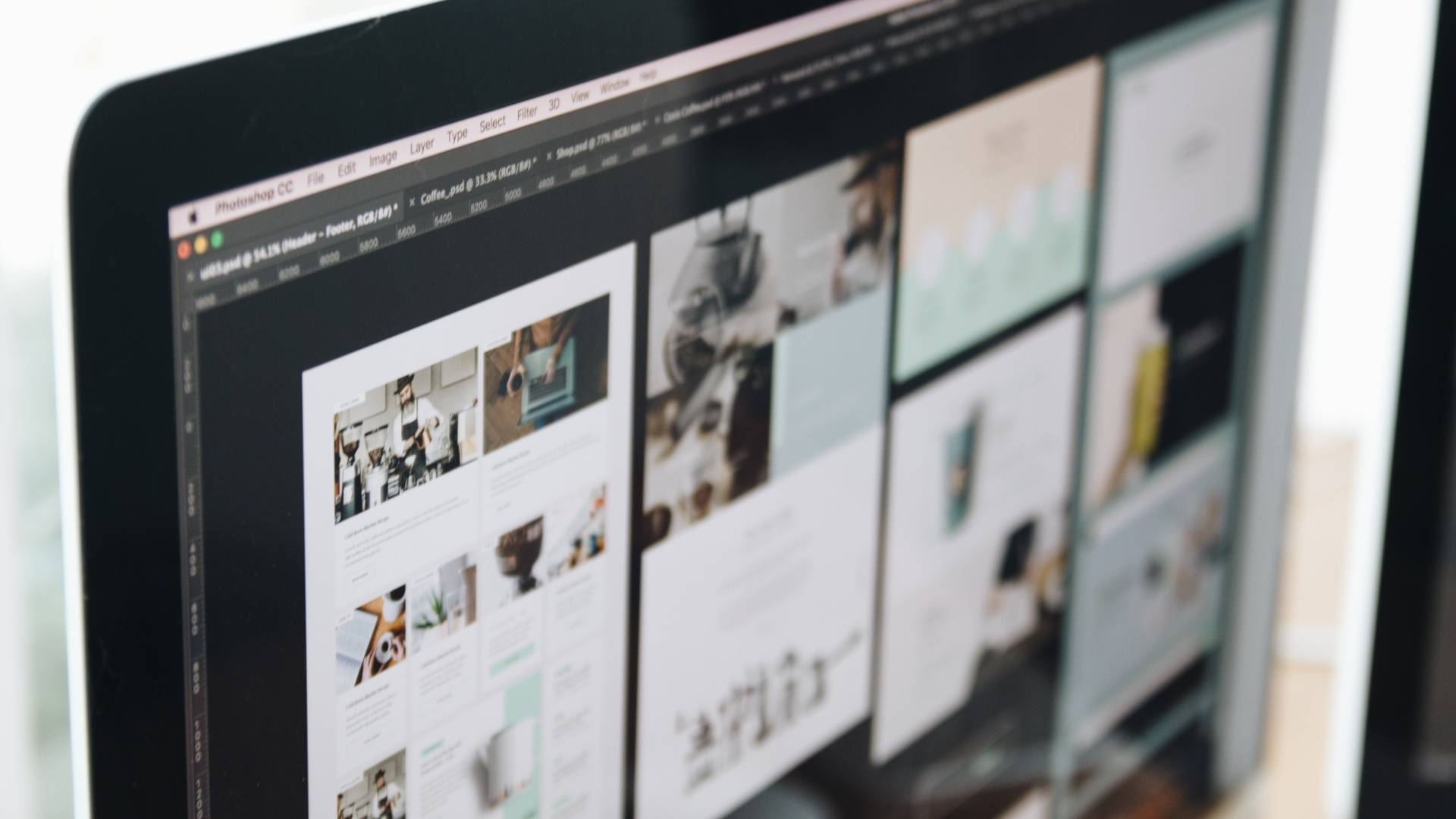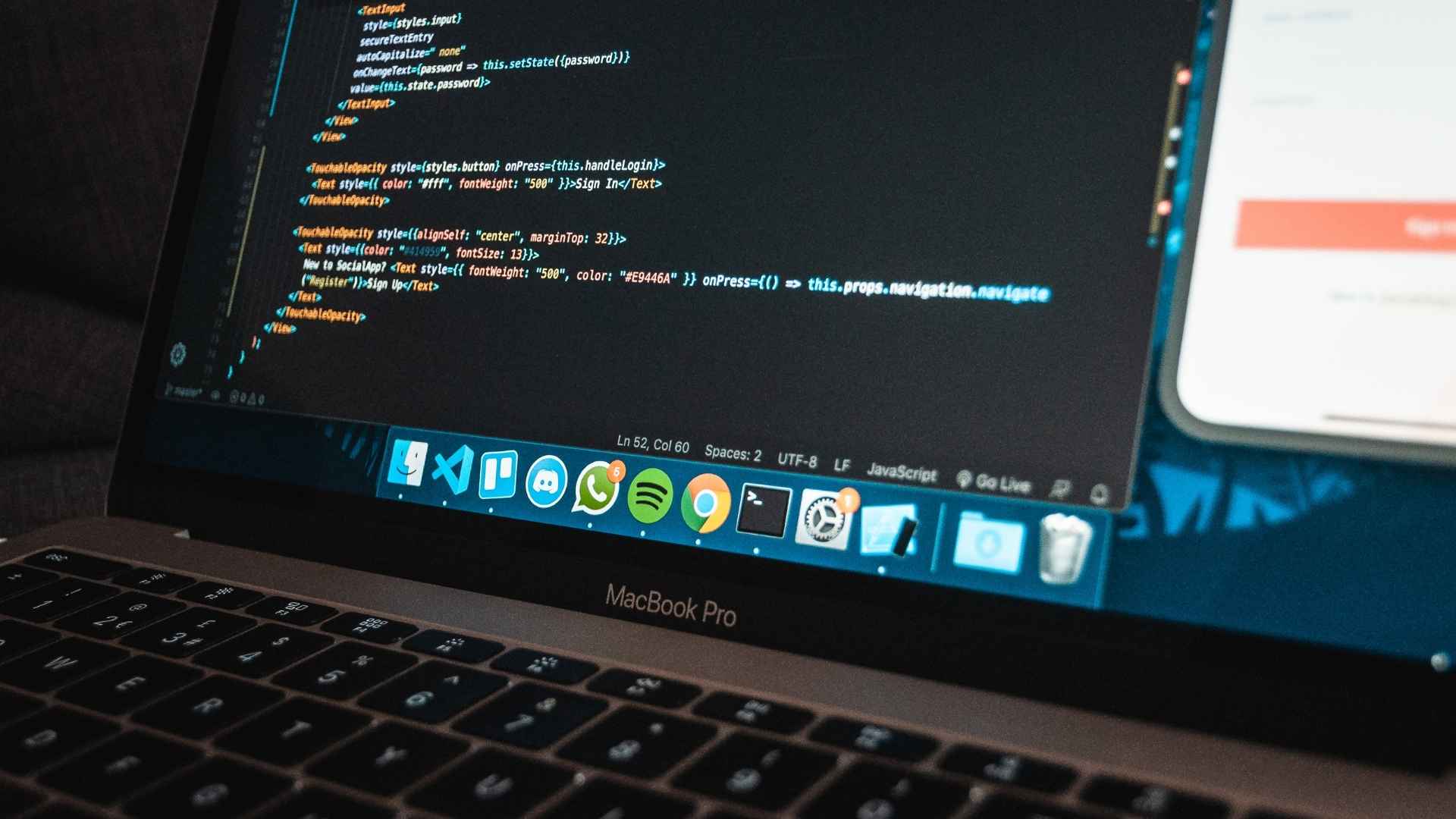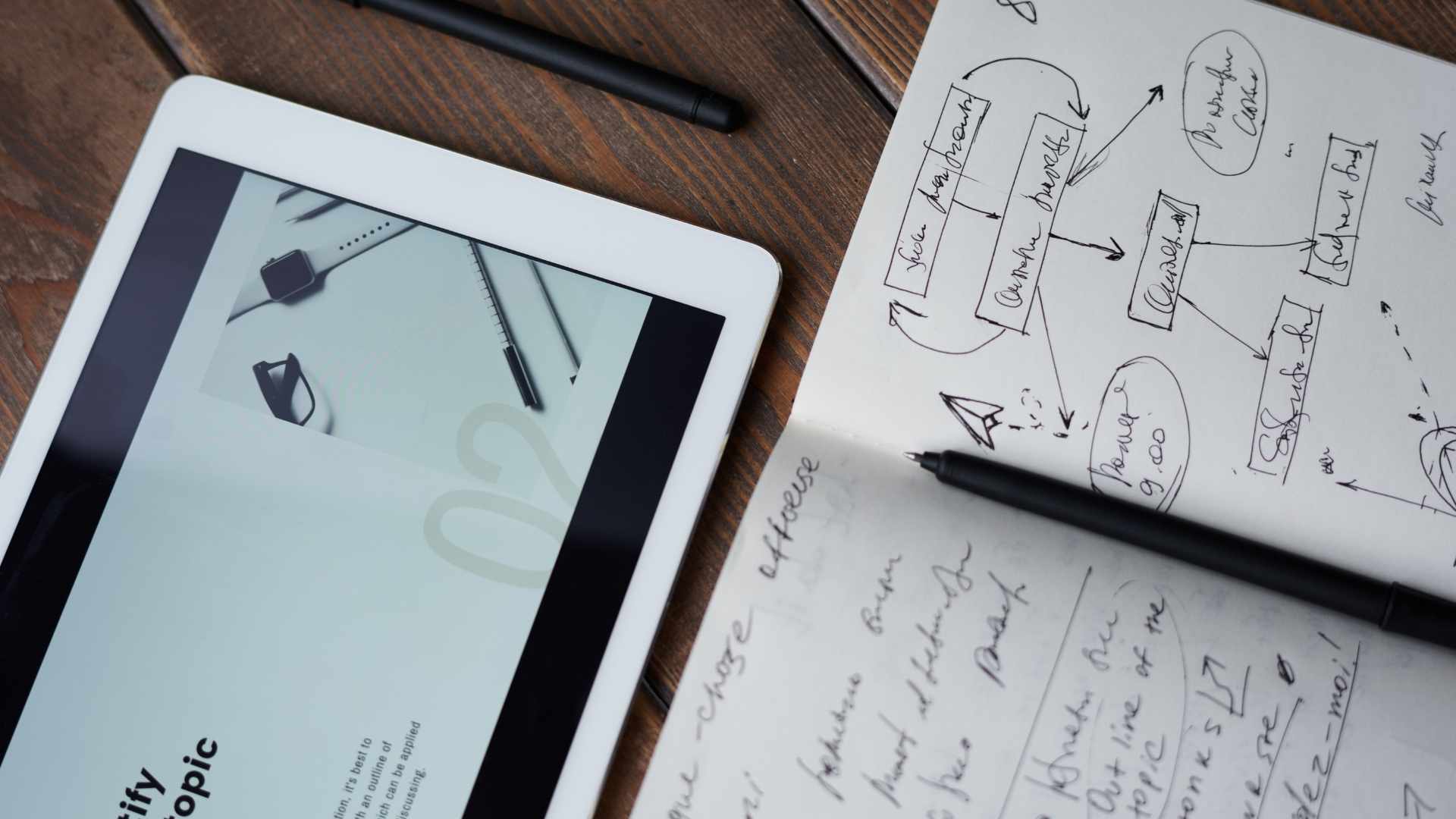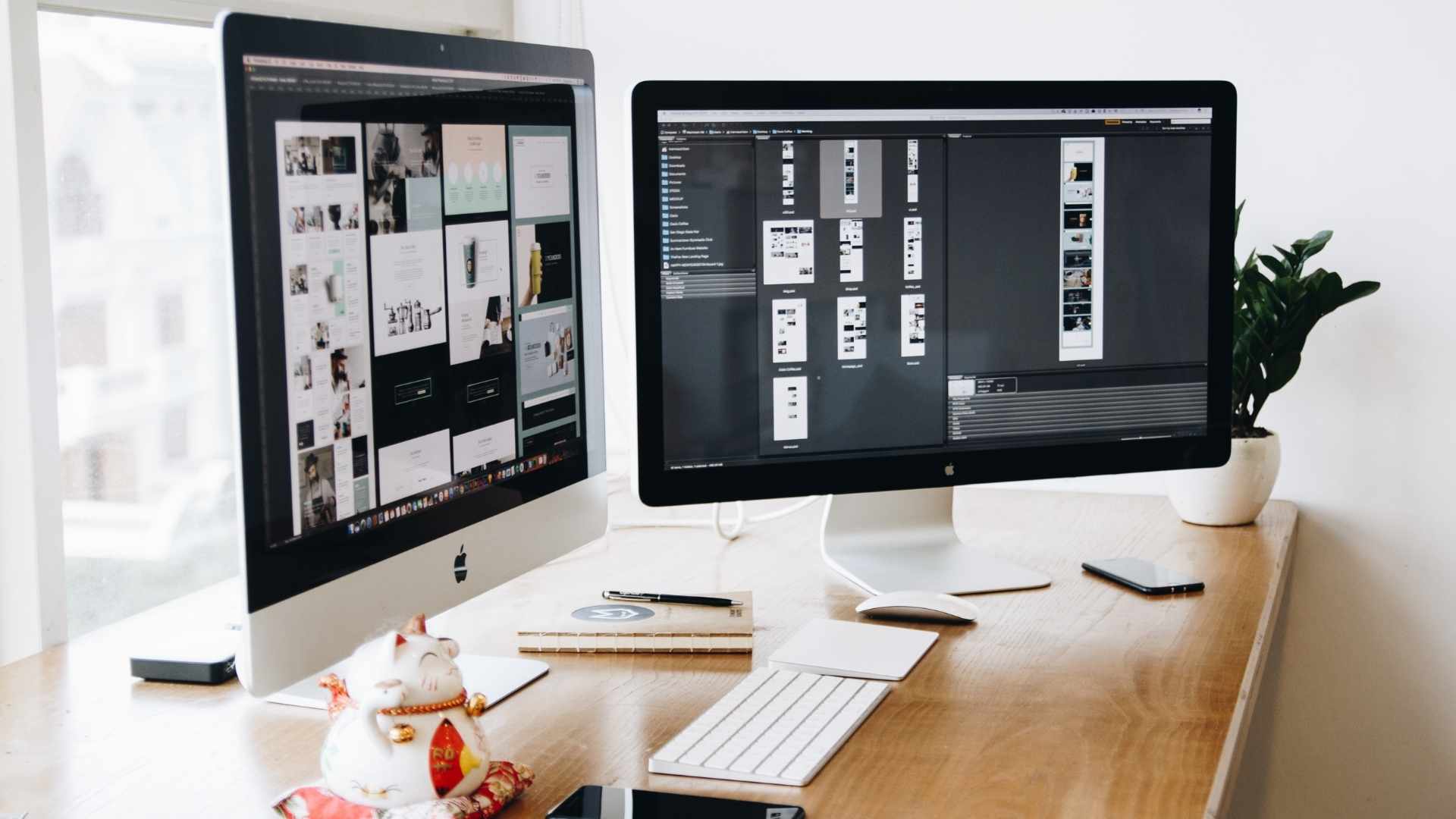Most custom business websites cost $40,000-100,000 in 2025. Simple template builds run $5,000-10,000, while integration-heavy platforms exceed $100,000. The spread comes from hours required (100-1,500+), depth of strategy, custom features, content scope, and timeline.
Last week, a client shared something that might sound familiar: They’d received three proposals for their website redesign. $15,000, $45,000, and $85,000. All supposedly for the “same” website.
“How is this possible?” they asked. “Are the expensive agencies just greedy? Are the cheap ones cutting corners? How do I know what’s reasonable?”
After building hundreds of websites since 2010, we’ve developed frameworks to help you navigate these questions. Here’s an insider’s look at what really drives website costs, how to evaluate any quote, and most importantly, how to invest in a website that actually grows your business.
The price bands at a glance
Before we dive deep, here’s what different investment levels actually mean:
Template Site
- 10-20 pages
- 100-150+ hours
- $5K-20K
- 3-8 weeks
Basic setup, light customization, template foundation
Professional Site
- 25-50 pages
- 400-500+ hours
- $40K-100K
- 4-6 months
Strategic research, custom design, conversion optimization, quality assurance
Enterprise Site
- 100+ pages
- 800-1,500+ hours
- $100K+
- 6-12 months
Complex integrations, governance systems, advanced testing, multiple stakeholders
Quick evaluation formula: Implied hourly rate = Price ÷ Hours
Under $75/hour often means junior talent or shortcuts. $100-150+/hour is typical for experienced teams.

Understanding the confusion: Why website quotes vary so wildly
If you’re confused by the massive price ranges, you’re not alone. The question “How much does a website cost?” is actually like asking “How much does a house cost?” A studio apartment and a mansion are both homes, but they serve different purposes at different quality levels.
The same principle applies to websites. That $15,000 quote and that $85,000 quote? They’re likely not different prices for the same product, but prices for fundamentally different approaches.
Here are the key variables that create such dramatic price differences:
“Custom design” means different things to different agencies.
For some, it means modifying an existing template’s colors and fonts. For others, it means creating original designs from scratch based on user research. Both call it “custom,” but the work involved differs by 10x.
The labor investment varies enormously.
A simple 10-page site might need 80-150+ hours. A strategic 50-page site typically requires 400-500+ hours. An enterprise platform can exceed 1,500+ hours. Understanding this helps you evaluate whether a quote makes sense.
Team composition affects both cost and outcome.
Junior developers might charge $40-60/hour while senior strategists command $150-200+/hour. More importantly, coordinating specialists (UX designers, UI designers, strategists, developers, SEO experts) requires experienced project management, which adds value but also cost.
“Included” features need careful comparison.
One agency’s “SEO optimization” might mean installing a basic plugin. Another’s includes 40+ hours of keyword research, technical optimization, and content strategy. Always ask for specifics.
Timeline directly impacts quality and cost.
A 4-week timeline forces template solutions and shortcuts. A 4-6 month timeline allows for proper research, strategy, and testing. You’re essentially choosing between “quick” and “right.”
Hidden costs can surprise you later.
Hosting, maintenance, content creation, stock photography, ongoing optimization, and future features often aren’t mentioned upfront. Smart buyers ask about total cost of ownership, not just initial build.
The better question to ask: Instead of “How much does a website cost?” try asking “What’s the right investment for my business goals?” This shifts the conversation from price to value.
The three layers of website cost (what you’re actually investing in)
To make sense of any website quote, it helps to understand the three essential layers that drive cost. Think of these as the foundation, walls, and roof of your digital house. Each layer builds on the previous one, and skipping any of them compromises the entire structure.
Layer 1: The Strategy Foundation ($10,000+ minimum for professional sites)
This foundational work determines whether your website becomes a business asset or an expensive brochure. Here’s what this investment typically covers:
Discovery & Strategic Research (20-30+ hours minimum)
Your team needs to understand your business, market position, and competitive landscape. This includes SWOT analysis, customer research, and competitive analysis. Without this foundation, you’re essentially building blind, hoping the design will somehow work.
Information Architecture (15-20+ hours)
This is the strategic organization of your content, designed around how your customers think and search. It’s not just creating a sitemap; it’s mapping the entire customer journey through your digital presence.
Project Management & Coordination
A 400-500 hour project requires coordinating multiple specialists: UX designers, UI designers, art directors, strategists, developers, and SEO experts. Professional project management ensures these pieces come together coherently.
Technical Foundation Setup
Server configuration, CMS installation, security protocols, and performance optimization baselines. This invisible work makes everything else possible and scalable.
Post-Launch Support & Training
Documentation, training sessions, and initial optimization support. Because a website launch is really just the beginning of its lifecycle.
Insider perspective: When you see quotes under $10,000 for a “custom” website, this strategic foundation is usually what’s missing. The site might look professional, but it won’t perform strategically.


Layer 2: The Design & Development Build (varies by scope)
This is where strategy becomes reality. The investment here depends on complexity:
Custom Design Templates ($1,000+ each)
True custom design involves:
- User research for your specific industry
- Multiple concept iterations
- Responsive design across all devices
- Interaction states and micro-animations
- Accessibility compliance
- Design system documentation
Quick check: If an agency promises 20 custom templates for $5,000 total, you’re likely getting modified pre-made themes, not custom design.
Page Development ($175+ per page average)
Each page requires:
- SEO optimization specific to its purpose
- Performance optimization
- Mobile responsiveness testing
- CMS configuration for easy updates
- Internal linking strategy
- Schema markup for search engines
The math: A 50-page site needs 250-300+ development hours minimum, not counting design or strategy. This helps explain why professional sites cost what they do.
Layer 3: The Content & Messaging (often underestimated)
Professional Copywriting ($250-500+ per page)
Quality content that converts requires:
- Audience research to understand their language
- Competitive analysis for differentiation
- Strategic keyword integration
- Conversion optimization based on psychology
- Consistent brand voice throughout
Many businesses underestimate this layer completely. Great design with weak content is like a Ferrari with a lawnmower engine—it looks impressive but doesn’t perform.
A helpful framework: Estimating project hours
Here’s an insider formula that helps you evaluate proposals. While not exact science, it gives you a rough sense of the labor involved:
Back-of-napkin hours formula: Total Hours ≈ (unique templates × 15-25) + (pages × 3-6) + feature weights
Common feature weights:
- Simple contact form: ~5 hours
- Advanced search/filtering: ~25 hours
- CRM integration: ~40 hours
- Ecommerce foundation: ~80+ hours
- Custom portal/dashboard: ~100+ hours
Example calculation: Let’s say you need 10 unique templates, 50 pages, and CRM integration: (10 × 20) + (50 × 4) + 40 = 440 hours
How this helps you: If someone quotes $10,000 for 440 hours of work, that’s roughly $23/hour. This might prompt you to ask clarifying questions: What’s the team’s experience level? What parts of the process are included? Are there aspects being streamlined?
This isn’t about “gotcha”—it’s about aligning expectations on both sides.

A financial perspective: Why higher upfront investment often costs less
Many businesses instinctively choose the lowest quote, which makes sense on the surface. However, looking at the total cost of ownership over 3 years often reveals a different story.
Here’s a pattern we’ve observed across hundreds of projects:
Scenario A: The $10,000 “budget” approach
- Year 1: $10,000 (initial build with templates)
- Year 1: $5,000 (fixes and unexpected additions)
- Year 2: $8,000 (band-aid solutions as problems emerge)
- Year 3: $45,000 (complete rebuild when growth demands it)
3-Year Total: $68,000 plus opportunity cost from poor performance
Scenario B: The $45,000 strategic investment
- Year 1: $45,000 (built with proper foundation)
- Year 1-3: $6,000/year (maintenance and optimization)
3-Year Total: $63,000 plus consistent revenue generation
The strategic investment actually costs $5,000 less over three years. But the real difference shows up in performance metrics—conversion rates, user engagement, and revenue generation.
How to calculate your break-even point
Here’s a simple framework to evaluate whether a higher investment makes sense for your situation:
Break-even months formula: Months to break even = Investment difference ÷ Monthly incremental gross profit
Example calculation: If a $45,000 site generates $5,000 more monthly revenue than a $10,000 site: $35,000 difference ÷ $5,000/month = 7 months to break even
After those 7 months, the additional revenue is pure profit. This framework helps you make an objective decision based on your specific business metrics rather than just comparing sticker prices.
Understanding investment tiers: What different budgets actually deliver
Based on hundreds of projects since 2010, here’s what you can realistically expect at different investment levels. Think of these as different tools for different business needs:
Under $10,000: The digital business card
- What you’re getting: A basic online presence using modified templates
- Who typically provides this: Freelancers, small teams, DIY platforms
- Timeline: 2-4 weeks typically
- Best suited for: Local businesses with minimal online competition, or businesses needing a simple placeholder while planning a larger investment
- Important to know: Most businesses outgrow this within 12-18 months as their needs evolve
- Often missing: Strategic foundation, custom functionality, conversion optimization, comprehensive SEO
Insider note: This can work perfectly for certain situations. The key is knowing whether your situation is one of them. Sub-$10K sites often need rebuilding within two years once growth kicks in—this is the exact pattern we illustrated in the 3-year cost scenario above.
$10,000 – $40,000: The growth starter
- What you’re getting: Semi-custom design with foundational strategy
- Who typically provides this: Small agencies, experienced freelance teams
- Timeline: 6-10 weeks typically
- Best suited for: Small businesses with straightforward needs and modest growth goals
- Important to know: This range often involves trade-offs. Ask specifically what’s included versus what would be “Phase 2”
- Often missing: Deep strategic research, extensive testing, advanced features, ongoing optimization
Key question to ask: “What happens when we outgrow this?” Understanding the upgrade path helps you evaluate long-term value.
$40,000 – $100,000+: The strategic business asset
- What you’re getting: Fully custom, research-driven website designed as a growth engine
- Who typically provides this: Established agencies with teams of senior specialists
- Timeline: 4-6 months (this timeline allows for proper research and iteration)
- Best suited for: Businesses serious about digital transformation and market leadership
- Important to know: This is where websites become strategic business tools rather than digital brochures
- Typically includes: Comprehensive research, custom design system, conversion optimization, technical SEO foundation, and post-launch support
The difference maker: At this level, every decision is based on research and strategy, not assumptions or templates.
$100,000+: The enterprise platform
- What you’re getting: Complex digital ecosystems with extensive functionality
- Who typically provides this: Large agencies, digital consultancies
- Timeline: 6-12+ months minimum
- Best suited for: Large organizations with complex needs, multiple stakeholders, or regulatory requirements
- Important to know: Ensure you actually need this level of complexity—sometimes a $60K solution works better than a $150K one
- Typically includes: Multiple integrations, governance systems, extensive documentation, enterprise-level support
Reality check: Many organizations invest at this level when a simpler solution would actually serve them better. Complexity isn’t always an advantage.


Decision framework: Which investment level fits your situation?
Quick diagnostic:
- Choose $10K-40K if you have one audience, <25 pages, simple forms, and no integrations
- Choose $40K-80K if you have 2-3 audiences, 25-75 pages, CRM or automation, and real competition
- Choose $80K-120K+ if you have >75 pages, gated content, calculators, compliance, ecommerce, or multiple integrations
Detailed breakdown by tier:
When $10K-40K makes sense:
- Single location or regional market
- Under 25 pages needed
- Simple contact forms only
- No complex integrations
- Basic SEO needs
- Limited competition online
When $40K-80K makes sense:
- Growing business with expansion plans
- 25-75 pages of content
- Need for conversion optimization
- Multiple service lines or products
- Moderate competition
- CRM or marketing automation needs
- Single brand, clear audience
When $80K-120K makes sense:
- Multiple audiences or personas
- 75-150+ pages of content
- Complex forms or calculators
- Multiple integrations needed
- Heavy competition online
- Compliance requirements
- Need for member portals or gated content
When $150K+ is necessary:
- Ecommerce functionality
- Multi-language support
- Complex search/filtering
- Role-based content access
- Enterprise system integrations
- Multiple brands or subsidiaries
- Governance and workflow systems
Cost drivers that push you up a tier:
Each of these typically moves you one band higher:
- Custom calculators or tools
- Ecommerce (even basic)
- Membership/portal features
- Compliance requirements (HIPAA, ADA, etc.)
- Multi-language needs
- Advanced integrations
- High-traffic performance requirements
The inescapable math: Why professional websites take 4-6 months
Understanding what professional website development actually requires helps you evaluate proposals objectively and set realistic expectations.
The hours breakdown
A professional 50-page website requires approximately:
- Strategy & Research: 40-60+ hours (competitive analysis, SWOT, positioning)
- Information Architecture: 30-40+ hours
- Design: 80-120+ hours (UX design, UI design, art direction)
- Development: 120-180+ hours
- Content Creation/Migration: 50-100+ hours
- QA and testing: 40-60+ hours
- Training and documentation: 20-30+ hours
Total: 380-590+ hours of actual work
This isn’t arbitrary padding. These hours represent strategic research, competitive analysis, design across multiple specialists, development, testing, and launch. The scope and complexity of your specific needs determine where you fall in these ranges.

Why rushing costs more (in money or quality)
The work requires coordination across teams of specialists: UX designers, UI designers, art directors, strategists, developers, SEO experts, project managers, and content creators. While you can parallelize some tasks, critical dependencies exist. Strategy must inform design. Design must guide development. Testing follows development.
The typical timeline:
- Weeks 1-3: Discovery, research, and strategy
- Weeks 4-6: Information architecture and wireframing
- Weeks 7-10: Design concepts and revisions
- Weeks 11-14: Development and content migration
- Weeks 15-16: Testing, training, and launch
This assumes prompt client feedback, no scope changes, and zero technical surprises. Real projects include stakeholder vacations, requirement evolution, and unexpected complexities.
The rush tax: You pay in money or quality
Need it faster? You face two options:
Option 1: Pay premium rates – 50-100% rush charges because multiple senior people must focus exclusively on your project, disrupting other work.
Option 2: Accept compromises – Templates, minimal testing, basic everything. Six-week launches often lead to months of fixes; careful six-month builds tend to run smoothly for years.
Making an informed decision
Questions to help you think strategically:
- What’s the real cost of not having an effective website for another 6 months?
- How much would even a 1% conversion improvement mean to your business?
- Are you solving for today’s needs or positioning for tomorrow’s growth?
These questions help you evaluate investment value rather than just comparing price tags.
The hidden costs nobody mentions upfront
The website build is just the beginning. Here’s what else you need to budget for:
Operational baseline (ongoing costs)
Hosting & Maintenance: $230-2,500/month combined
- Hosting varies from $30-500/month based on traffic and performance needs
- Maintenance runs $200-2,000/month for updates, security, and minor adjustments
- Cheap hosting means slow loading; minimal maintenance means security vulnerabilities
Content & Marketing Tools: $600-6,000/month
- Fresh content for SEO and engagement
- Analytics, heat mapping, A/B testing platforms
- Email marketing and CRM tools
- Stock photography and video assets (phone snapshots rarely convey professional quality)
Often-forgotten technical work (one-time costs)
SEO migration for redesigns:
- Redirect mapping
- testing
- monitoring
10-40+ hours ($1,000-6,000)
Analytics and CRM setup:
- Event tracking
- form capture
- conversion tracking
10-30+ hours ($1,000-4,500)
Content migration:
- Moving
- reformatting
- optimizing existing content
20-100+ hours ($2,000-15,000)
Integration setup:
- Payment gateways
- email platforms
- CRM connections
15-50+ hours per integration ($1,500-7,500)
The improvements you’ll want (Year 2 additions)
- Phase 2 features: $10,000-30,000 for the functionality you didn’t budget for initially
- Conversion optimization: $5,000-15,000 to improve performance based on real user data
- Additional templates: $3,000-10,000 as you expand content types
- Integration additions: $5,000-20,000 for CRM, marketing automation, or e-commerce
- Content expansion: $10,000-50,000 for blog development, resources, or tools
The real total investment framework
Here’s what smart companies actually budget:
Year 1:
- Initial build: $40,000-100,000
- Additional needs: $10,000-20,000
- Total Year 1: $50,000-120,000
Years 2-3 annually:
- Maintenance & hosting: $5,000-10,000
- Content & optimization: $10,000-30,000
- Feature additions: $5,000-20,000
- Annual ongoing: $20,000-60,000
Rule of thumb: Budget 25-30% of initial investment annually for optimal performance and growth.


Your evaluation toolkit: 10 questions to ask any web design partner
After reviewing hundreds of proposals, we’ve identified the questions that help you understand what you’re really buying. These aren’t “gotcha” questions—they’re tools to ensure alignment between your expectations and what’s being delivered.
1. “How many hours of work are included, and how are they distributed?”
Why this matters: A professional site typically requires 200+ hours minimum. Understanding the distribution (strategy vs. design vs. development) reveals priorities.
2. “Who exactly will work on my project, and what’s their experience level?”
Why this matters: The team composition directly affects both quality and cost. Look for a balance of senior strategy and efficient execution.
3. “What’s your revision process?”
Why this matters: “Unlimited revisions” often means poor project scoping. Clear revision rounds with defined feedback windows indicate professional project management.
4. “How do you handle post-launch support?”
Why this matters: Websites need ongoing care. Good partners include 30-60 days of post-launch support and offer clear maintenance options.
5. “Can I see examples of sites you built 2+ years ago?”
Why this matters: This reveals lasting quality. Sites that still look good and perform well indicate thoughtful, future-proof development.
6. “What’s NOT included in this quote?”
Why this matters: Understanding exclusions prevents surprise costs. Professional quotes are comprehensive with clear boundaries.
7. “How will you measure the success of this project?”
Why this matters: Partners who care about outcomes (not just delivery) will have specific KPIs and measurement plans.
8. “What happens if we need changes mid-project?”
Why this matters: Change is inevitable. Look for reasonable change processes with transparent pricing, not punitive fees.
9. “How many projects does my project manager handle simultaneously?”
Why this matters: Overloaded project managers mean delayed responses and divided attention. 5-8 projects is typical; 15+ is concerning.
10. “Why is your price different from other quotes we’ve received?”
Why this matters: The answer reveals their value proposition and self-awareness. Confident partners can articulate their differentiation clearly.
Warning signs to watch for
While evaluating proposals, these red flags suggest a mismatch between promise and delivery:
- Promises that seem too good (4-week custom builds, unlimited everything)
- No breakdown of phases or deliverables
- Vague language about what’s included
- No mention of testing or quality assurance
- Very low implied hourly rates (under $75/hour for custom work)
- No post-launch support plan
- Pressure to sign immediately
Remember: These questions help you find the right fit, not necessarily the cheapest option.
Frequently asked questions
How much should I realistically budget for a professional website?
For a growth-focused business, plan on $40,000-80,000 for a strategic website investment. This range typically includes research, custom design, development, SEO foundation, and training. Sites under $30,000 often involve trade-offs you should understand upfront. Sites over $100,000 include enterprise features that many businesses don’t actually need.
Why do web design quotes vary so dramatically?
Think of it like comparing construction quotes—one contractor might be quoting a renovation while another is quoting a complete rebuild. A $10,000 quote might represent 80 hours of template work while an $80,000 quote represents 500+ hours of custom development by senior specialists. Understanding what’s included helps you compare apples to apples.
Is a $50,000+ website worth the investment?
It depends on your business context. If you’re competing in a crowded market where competitors have professional sites, then yes—it’s often worth it. If you’re the only provider in a small market, probably not. The key is calculating potential ROI: if a better website can generate even $5,000 more per month, a $50,000 investment pays for itself within a year.
What ongoing costs should I plan for beyond the initial build?
Budget 25-30% of your initial investment annually for ongoing needs. This covers hosting ($30-500/month), maintenance ($200-2,000/month), content updates, performance optimization, and feature additions. Many businesses are surprised by these costs, so it’s better to plan for them upfront.
How long does a professional website project realistically take?
A strategic website (25-50 pages) typically takes 4-6 months. This isn’t arbitrary—the work requires 400-500+ hours that must happen in sequence. Strategy informs design, design guides development, and everything needs proper testing. Rushing this process is possible but almost always results in problems that take longer to fix than doing it right initially.
Should I use a website builder to save money?
Website builders can work well for simple sites with no competition. However, if you need custom functionality, want to rank in competitive search results, or need to differentiate from competitors, builders become limiting. Consider your long-term needs—many businesses find themselves migrating from builders to custom sites within 2 years.
How can I evaluate if a quote is reasonable?
Use this quick check: divide the total cost by estimated hours to get the implied hourly rate. Rates under $75/hour often indicate junior teams or significant outsourcing. $100-150+/hour is typical for experienced professionals. Also examine what’s specifically included versus what triggers additional costs.
Is it better to start small and upgrade later?
This strategy can work but often costs more long-term. If you know you’ll need advanced features within 2 years, building them into the initial architecture is usually more cost-effective than retrofitting later. However, if you’re testing a new market or business model, starting simple makes sense.
What should I prioritize with a limited budget?
Focus on foundation over features. A well-built 20-page site that converts visitors outperforms a poorly built 50-page site. Prioritize user experience, mobile responsiveness, site speed, and clear conversion paths. You can always add pages and features later—fixing a weak foundation is much harder.
When is redesigning better than refreshing?
Consider a refresh if your site is under 3 years old, performs reasonably well, and just needs modernization. Consider a complete redesign if it’s over 3 years old, built on outdated technology, converts poorly, or doesn’t reflect your current business. A good rule: if improvements would cost over 50% of rebuilding, rebuild.
How do I maintain my website after launch?
Plan for ongoing investment in your website’s health. This includes regular updates, security patches, content additions, and performance optimization. Most businesses budget $12,500-15,000 annually for a $50,000 site. This keeps it secure, fast, and growing rather than slowly declining.

Action plan: Your next steps
Week 1: Define your real needs
Monday (2 hrs): Calculate your actual ROI requirements. If your average customer value is $5,000 and you need 20 new customers to justify a $50,000 website, that’s just 2 customers per month for 10 months. Is that realistic?
Tuesday (1 hr): Audit competitor websites honestly. Screenshot their best features. Note their weaknesses. Understand what you’re really competing against.
Wednesday (2 hrs): List must-have versus nice-to-have features. Be ruthless. Most “must-haves” are actually “nice-to-haves.” Focus on what drives revenue.
Thursday (1 hr): Determine realistic timeline for your business. Can you wait 4-6 months for transformation? Or do you need something basic now and better later?
Friday (2 hrs): Set budget based on expected returns, not arbitrary limits. If a website can generate $200,000 in new revenue, spending $50,000 is logical. If it can only generate $20,000, it’s not.
Week 2: Evaluate your options
Monday (2 hrs): Research agencies in your price range. Look at their recent work, not their greatest hits from 5 years ago.
Tuesday (3 hrs): Request detailed proposals, not just quotes. You need to understand what you’re buying, not just what it costs.
Wednesday (2 hrs): Compare proposals using the 10-question framework above. Create a spreadsheet. Score each vendor objectively.
Thursday (2 hrs): Check references and 2-year-old portfolios. Ask specific questions about process, problems, and results.
Friday (1 hr): Make your decision based on value, not price. The right partner costs more upfront but saves money long-term.
Making the right investment decision
After guiding hundreds of businesses through website investments since 2010, the pattern is clear: success comes from matching investment to business objectives, not finding the cheapest option.
Key principles to remember:
- Websites are investments that generate returns, not expenses to minimize
- Professional sites require 400-500+ hours of coordinated specialist work
- Short-term savings often create long-term costs through rebuilds
- Quality takes time—successful transformations take months, not weeks
The right website at the right price for the right business changes everything. The wrong website at any price changes nothing.
Your next steps
Now that you understand what drives website investments, you can evaluate options based on value rather than just price.
Use our transparent pricing calculator to see how different factors affect investment levels. It’s based on the same frameworks shared here—no hidden multipliers or mysterious math.
Or schedule a consultation to discuss your specific needs. We’ll help you understand whether you need a $20,000 solution or a $100,000 transformation. Sometimes that means recommending a different approach than expected. Sometimes it means suggesting you wait. Always it means giving honest guidance based on your actual business needs.
Because ultimately, our role is helping you figure out what “right” means for your situation.









